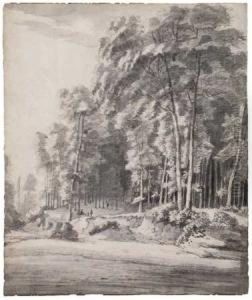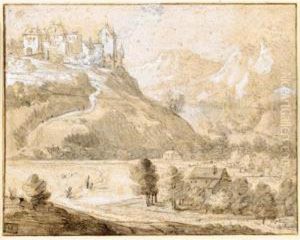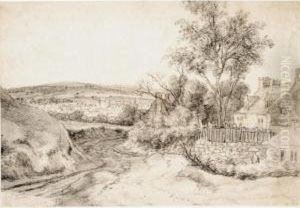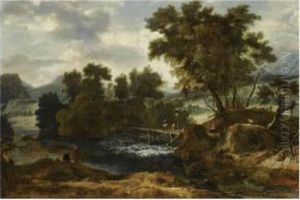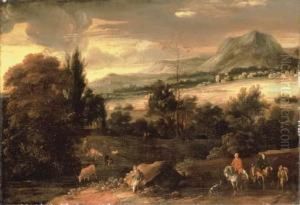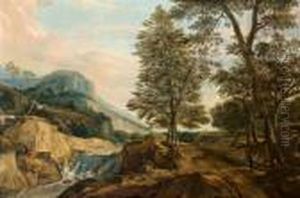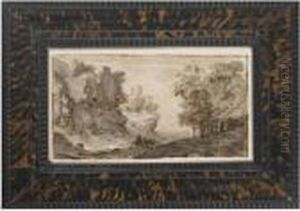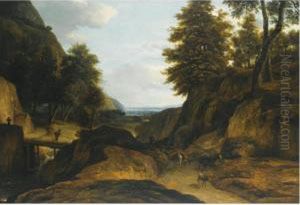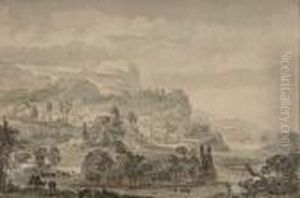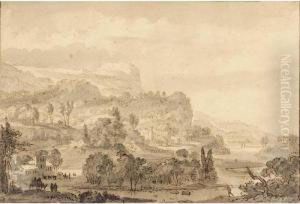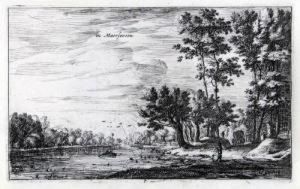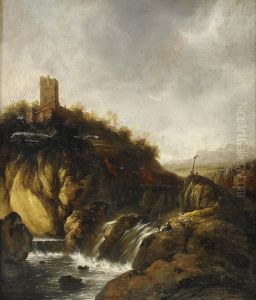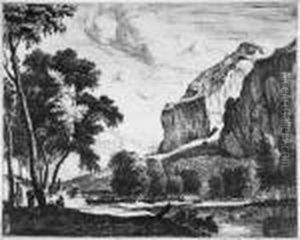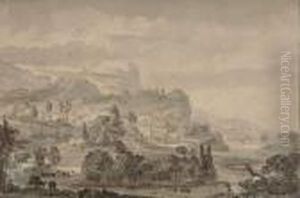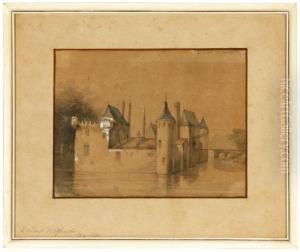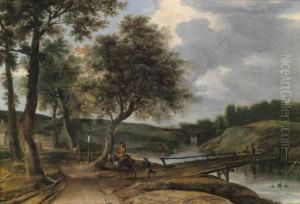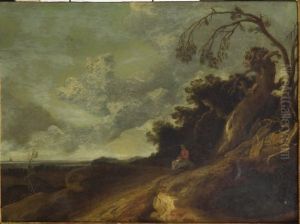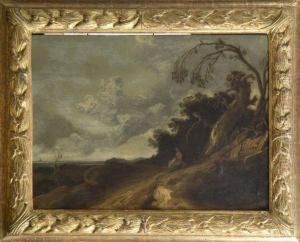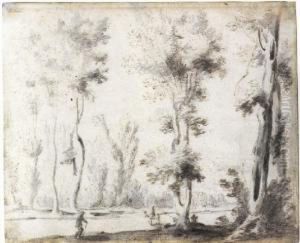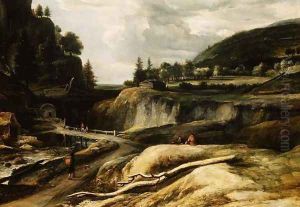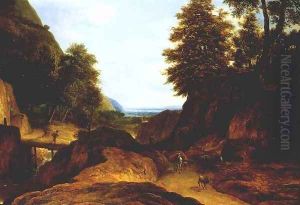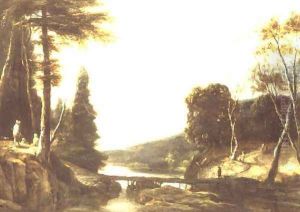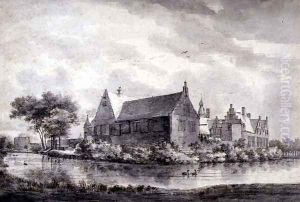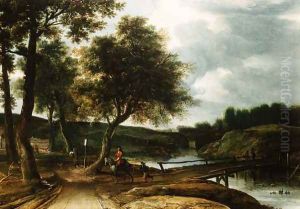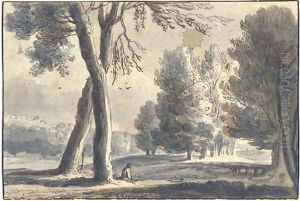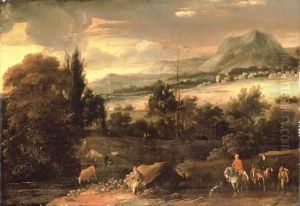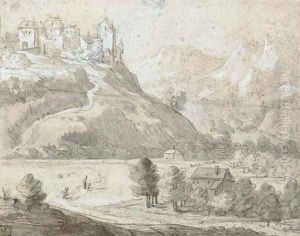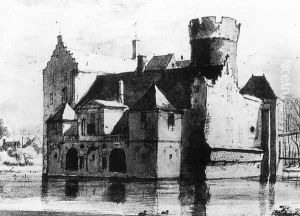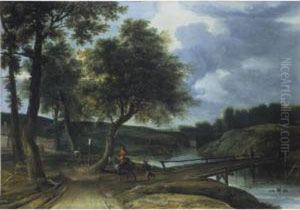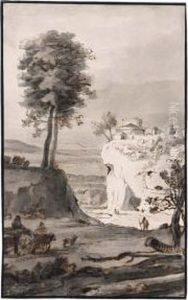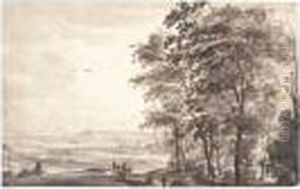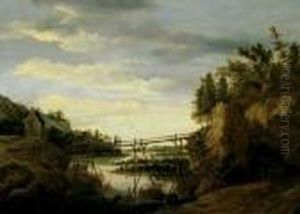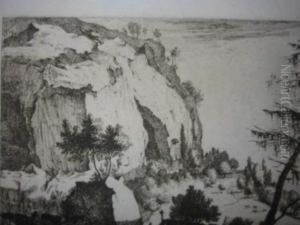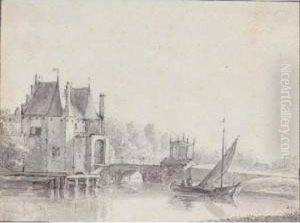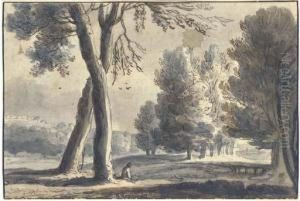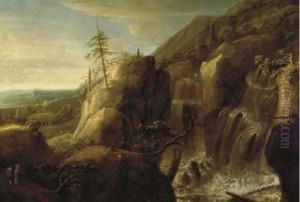Roelandt Roghman Paintings
Roelandt Roghman was a Dutch Golden Age painter and engraver, born in Amsterdam in 1627. He was part of a family of artists; his father, Hendrick Lambertsz Roghman, was a landscape painter, and he had a sister, Geertruydt Roghman, who was also involved in the arts, known for her etching and engraving work. Roelandt, however, is most noted for his detailed drawings and etchings of castles, ruins, and landscapes in the Netherlands.
Roghman began his artistic education under the tutelage of his father and later might have been a pupil or an assistant to Claes Corneliszoon Moeyaert, a well-known Dutch painter. Although there is no concrete evidence of his formal training, his works display a high level of skill and knowledge of the Dutch landscape tradition. Roghman never married and spent most of his life traveling throughout the Netherlands, sketching and etching the countryside, castles, and noble houses.
He worked in various media, including pen and ink, chalk, and etching. His etchings, in particular, were esteemed for their attention to detail and accuracy, and they served as historical documents of the Dutch landscape during that period. His drawings were collected avidly during his lifetime and were used as source materials for other artists' paintings. Despite his focus on landscapes, he also produced several figure drawings and religious works.
Roghman's talent in capturing the essence of Dutch landscapes and architecture was recognized by his contemporaries, but like many artists of his time, he did not achieve significant fame during his lifetime. His works gained more recognition posthumously, and today he is appreciated for his contribution to the Dutch Golden Age of painting. Roghman died in Amsterdam in 1692, leaving behind a body of work that continues to be of interest to art historians and collectors for its historical value and artistic merit.
